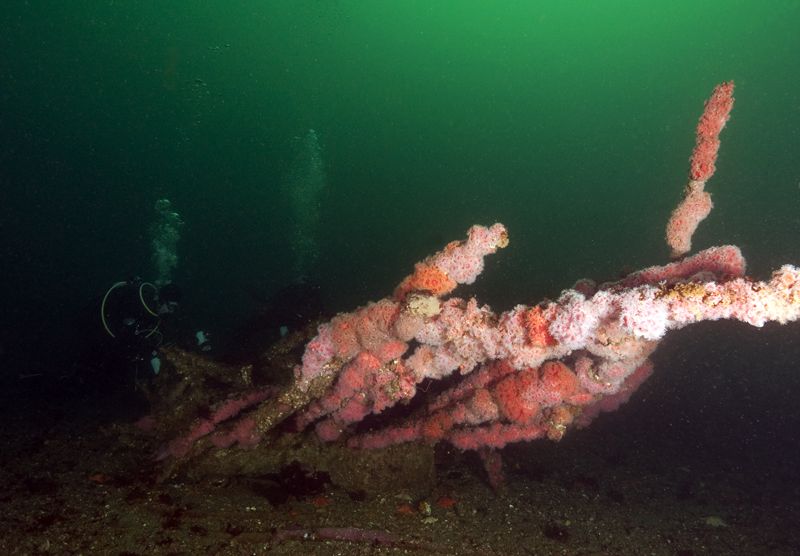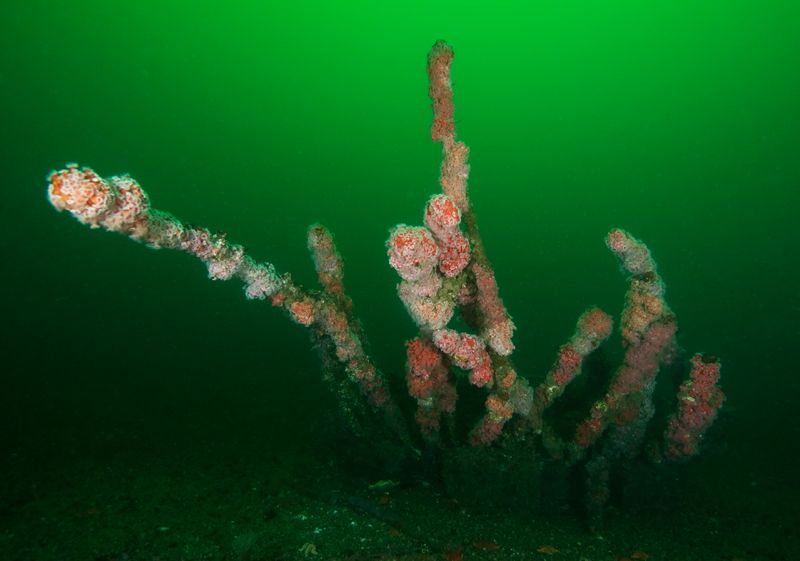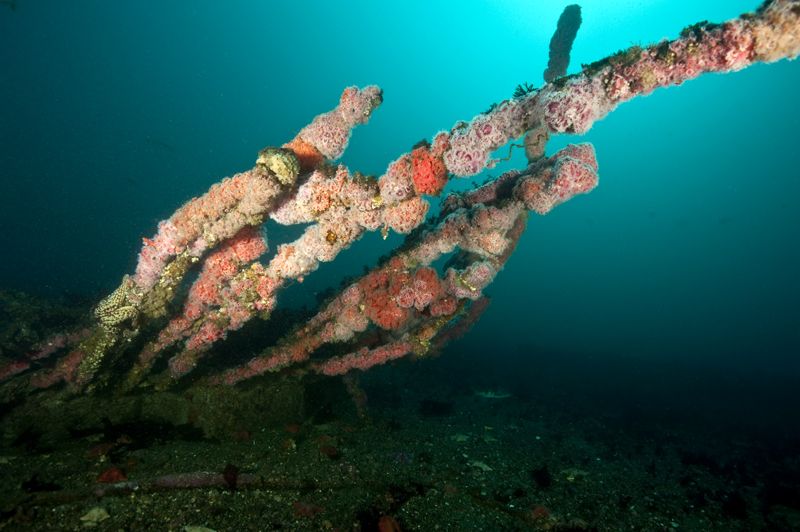Merry
Contributor
Vis has been highly variable at our home away from home, Golf Ball Reef, but we still find different subjects to shoot. We never know what we're going to see, or what new animals will emerge as the reef's life cycle continues.
A view of Palos Verdes Peninsula from GBR.

Flabellina iodinea swimming in the water column.





Juvenile calico rockfish remind me of butterflies as they dart around the rocky rubble.




Young kelp plants at GBR support miniscule shrimp, nudis, and flatworms. They're generally hiding under the fronds, somewhat cryptically colored and transparent.



Phil found lion nudibranch eggs (Melibe leonina) several weeks ago on young kelp plants at the north end of GBR. I estimate this youngster to be ~4 mm. Maybe we'll see some adults over the coming months.

The orange flatworm, Vorticeros praedatorium, shows up on kelp fronds no larger than a finger-nail clipping. I believe the ones we see are about full-size, so I included this shot to give you a sense of scale. Directly below it is a tiny lion nudi, too small for a diver's naked eye. At either side of the photo are 2 more lion nudis, barely visible.

From the barge yesterday:


A view of Palos Verdes Peninsula from GBR.

Flabellina iodinea swimming in the water column.





Juvenile calico rockfish remind me of butterflies as they dart around the rocky rubble.




Young kelp plants at GBR support miniscule shrimp, nudis, and flatworms. They're generally hiding under the fronds, somewhat cryptically colored and transparent.



Phil found lion nudibranch eggs (Melibe leonina) several weeks ago on young kelp plants at the north end of GBR. I estimate this youngster to be ~4 mm. Maybe we'll see some adults over the coming months.

The orange flatworm, Vorticeros praedatorium, shows up on kelp fronds no larger than a finger-nail clipping. I believe the ones we see are about full-size, so I included this shot to give you a sense of scale. Directly below it is a tiny lion nudi, too small for a diver's naked eye. At either side of the photo are 2 more lion nudis, barely visible.

From the barge yesterday:









